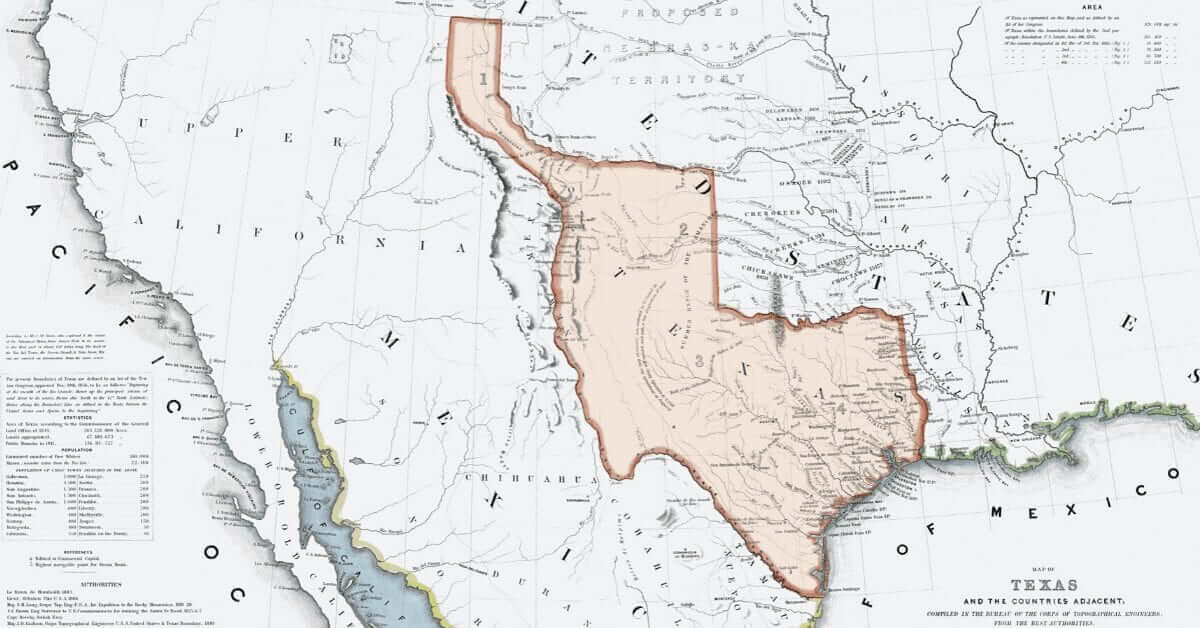One of the most persistent misconceptions in American history is that Texas entered the United States through a treaty. This belief, while widespread, is factually incorrect and obscures the unprecedented constitutional maneuver that brought the Republic of Texas into the Union. Understanding this distinction is crucial to grasping the unique nature of Texas’s relationship with the federal government and its path to statehood.
The Common Misconception
Many Americans, including many Texans, believe that Texas joined the United States through a treaty between two sovereign nations. This belief likely stems from Texas’s unique status as an independent republic before annexation and the diplomatic negotiations that occurred between the two nations. However, this understanding conflates the attempted method of annexation with what actually occurred.
The Failed Treaty of 1844
The United States did attempt to annex Texas through a treaty. In April 1844, President John Tyler’s administration negotiated a treaty of annexation with the Republic of Texas. This treaty was submitted to the United States Senate for ratification, as required by Article II, Section 2 of the U.S. Constitution, which states that the President “shall have Power, by and with the Advice and Consent of the Senate, to make Treaties, provided two thirds of the Senators present concur.”
The treaty faced significant opposition. Northern senators feared that adding Texas as a slave state would upset the delicate balance between free and slave states. Others questioned the wisdom of annexing territory that Mexico still claimed as its own, viewing it as an act that would likely provoke war. When the Senate voted on June 8, 1844, the treaty was decisively rejected by a vote of 35 to 16, falling far short of the two-thirds majority required for ratification.
The Unprecedented Joint Resolution
Rather than accept defeat, annexation proponents devised an alternative approach that circumvented the constitutional treaty process. Following the 1844 presidential election, in which Democrat James K. Polk campaigned on a platform of territorial expansion including Texas annexation, outgoing President Tyler proposed using a joint resolution of Congress instead of a treaty.
A joint resolution requires only a simple majority vote in both the House of Representatives and the Senate, rather than the two-thirds Senate majority required for treaties. On February 28, 1845, Congress passed the Texas Annexation Joint Resolution by narrow margins: 120-98 in the House and 27-25 in the Senate. President Tyler signed it on March 1, 1845, just three days before leaving office.
Key Differences Between Treaties and Joint Resolutions
- Constitutional Authority: Treaties are explicitly mentioned in the Constitution as the mechanism for international agreements. Joint resolutions are a legislative tool typically used for domestic matters.
- Voting Threshold: Treaties require two-thirds Senate approval; joint resolutions require only simple majorities in both chambers.
- Historical Precedent: No territory had ever been annexed to the United States through a joint resolution before Texas. The mechanism had been used for admitting states from existing U.S. territories, but never for incorporating a foreign nation.
- International Law Implications: Treaties are recognized instruments in international law for agreements between sovereign nations. Joint resolutions are domestic legislative acts.
Constitutional Controversy
The use of a joint resolution to annex Texas was controversial even at the time and raised serious constitutional questions that were never fully resolved. Critics argued that the Constitution’s framers specifically required a supermajority for treaties precisely to ensure broad consensus on matters involving foreign nations and territorial expansion. They contended that using a simple legislative majority to accomplish what a treaty could not represented a dangerous constitutional end-run.
Senator Thomas Hart Benton of Missouri, despite supporting annexation, called the joint resolution method “an undisguised usurpation” that violated the Constitution. Other senators warned that this precedent could be used to justify future expansions of federal power beyond constitutional limits.
These concerns were not merely academic. The annexation of Texas directly contributed to the outbreak of the Mexican-American War in 1846, validating the fears of those who had opposed circumventing the treaty process. The constitutional questions raised by this method of annexation have never been adjudicated by the Supreme Court.
Texas’s Unique Status
What makes the Texas annexation particularly significant is that Texas was not merely a territory or a colonial possession, but a fully independent nation. The Republic of Texas had existed as a sovereign state for nine years, from 1836 to 1845. It had:
- Established diplomatic relations with multiple nations, including the United States, France, Great Britain, the Netherlands, and Belgium
- Maintained its own military forces and fought its own wars
- Operated its own postal system, currency, and government institutions
- Conducted international trade and negotiated commercial agreements
- Exercised all the attributes of sovereignty recognized in international law
Texas was not seeking to join the United States as a dependent territory seeking statehood. Rather, it was a negotiation between two independent nations about political union. This context makes the failure to use the constitutional treaty process even more constitutionally problematic.
The Process of Texas’s Entry
Following the passage of the joint resolution, Texas still had to consent to annexation. The Republic of Texas held a convention that accepted the U.S. offer on July 4, 1845. Texas then drafted a state constitution, which was approved by the convention and by popular vote in October 1845. The U.S. Congress accepted this constitution and formally admitted Texas as the 28th state on December 29, 1845.
It is worth noting that even in this final stage, the process was not a treaty between equals, but rather Texas accepting terms set by the U.S. Congress through the joint resolution.
Why This Matters
Understanding that Texas did not enter the Union through a treaty is important for several reasons:
- Historical Accuracy: We must base our understanding of Texas’s relationship with the federal government on historical facts, not myths or misconceptions.
- Constitutional Precedent: The Texas annexation established a precedent for circumventing constitutional requirements through alternative legislative mechanisms, a precedent with implications far beyond this single event.
- Understanding Sovereignty: Recognizing that Texas was a fully sovereign nation helps us understand the magnitude of the political decision to join the United States and the unique nature of Texas’s entry into the Union.
- Legal and Political Implications: The controversial nature of the annexation process raises questions about the legal foundation of the relationship between Texas and the federal government that remain relevant today.
The Facts and Implications
Texas did not enter the United States through a treaty. Instead, it was annexed through an unprecedented use of a congressional joint resolution, a mechanism that circumvented the constitutional treaty process and its requirement for a two-thirds Senate majority. This fact is not a minor historical footnote but a significant element of Texas’s unique history and its relationship with the federal government.
The Republic of Texas was a sovereign nation that chose to join the United States through a process that raised serious constitutional questions at the time and has never been fully resolved. Understanding this history—accurately and completely—is essential for any serious discussion of Texas’s past, present, and future relationship with the United States.
As Texans, we owe it to ourselves and to history to understand the true nature of how our state became part of the Union. Only with this accurate understanding can we properly evaluate the unique position Texas holds in American history and consider what that means for our future.



Very fascinating and interesting to think about, and I’m glad to know this. But how does it affect the process of reclaiming independence? Does it affect the arguments for independence alone, or does also affect the legal means we use? Would the independence process use nullification as a preparation tool before making the final declaration of independence? It would seem that nullifying the unconstitutional nature of the joint resolution might be a valid precept to solidifying the international legal aspect which could be helpful in getting other nations to recognize Texas as independent nation whereas pressures from the US on allies would be immense against them recognizing.